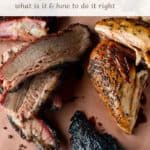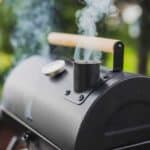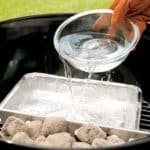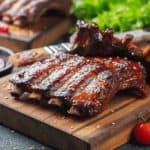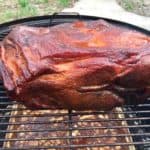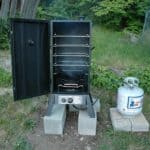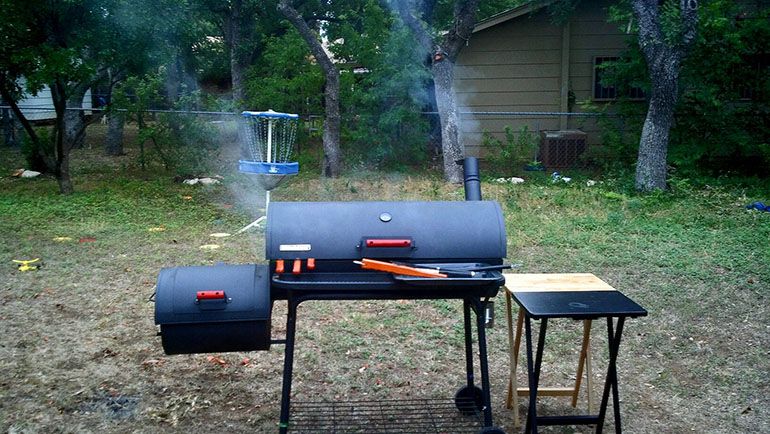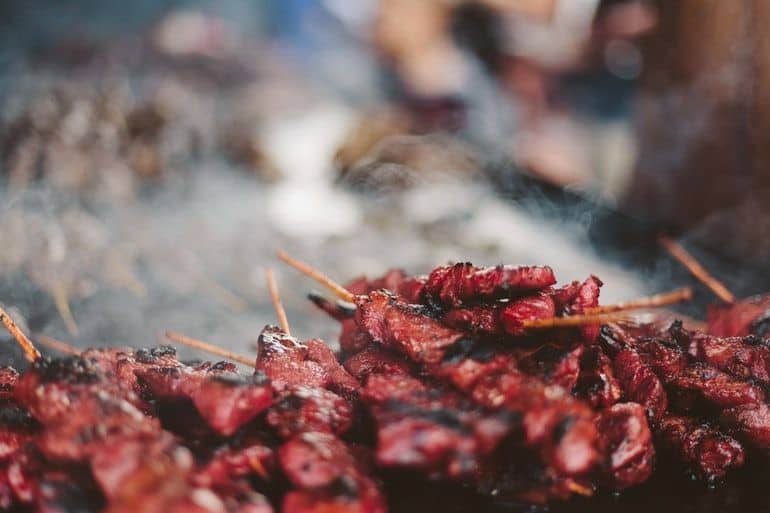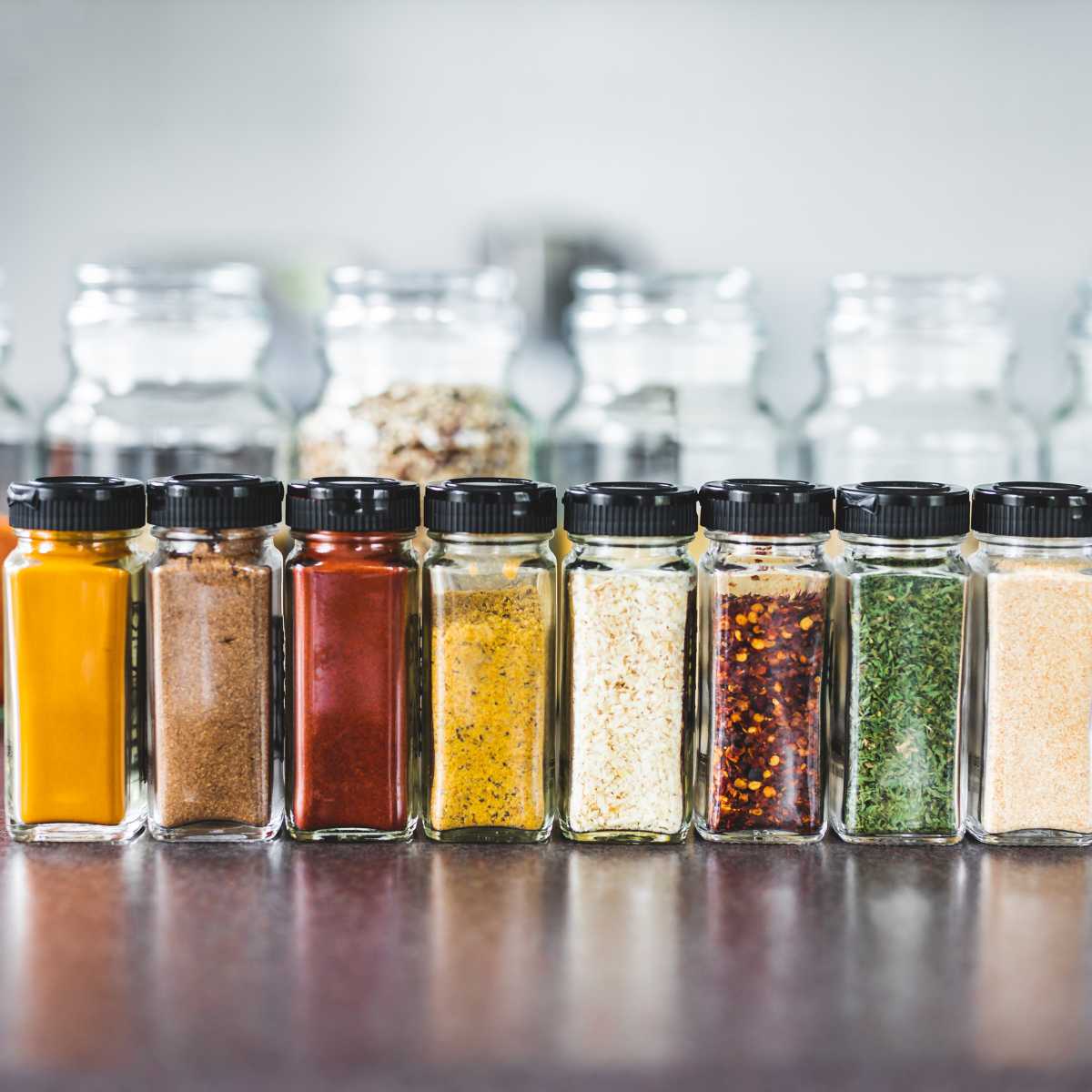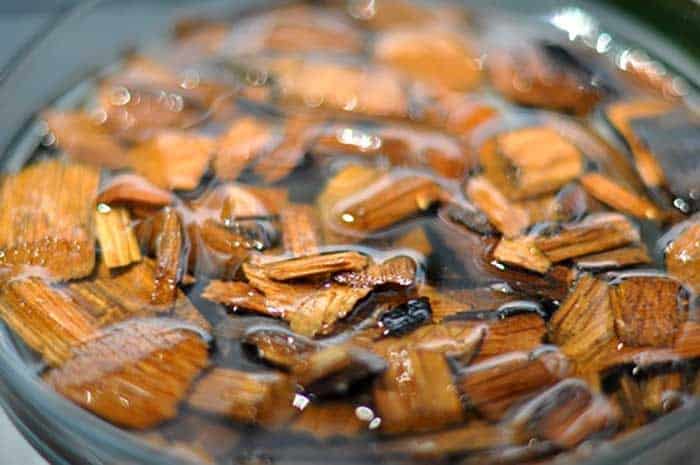A good smoke ring is a badge of honor for barbecue fans and pit masters worldwide. Find out how to smoke perfect pink meat with our guide to achieving the BBQ smoke ring.
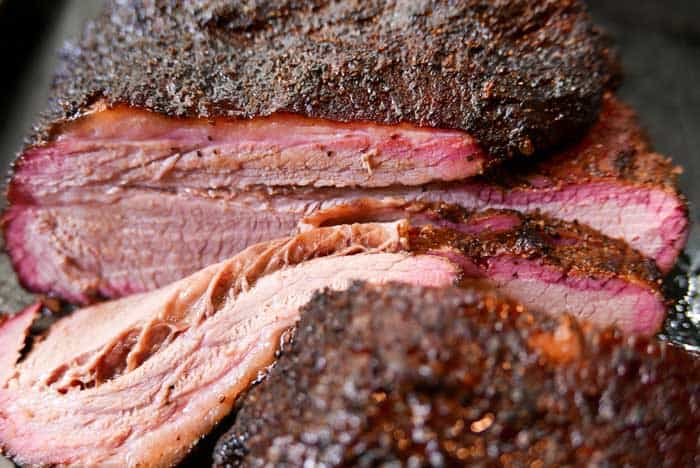
Having your cooked meat exhibiting a smoke ring is very much a badge of honor among BBQ enthusiasts. The lovely pink ring circling the center of the meat is all the proof many people need to show that they know how to grill.
Less knowledgeable grillers may grow frustrated when the smoke ring eludes them, but there’s no need to be frustrated. Several factors can help bring the ring to life, and surprisingly a deep understanding of science can go a long way.
What is a Smoke Ring?
When slicing into a freshly smoked piece of meat, you can identify the smoke ring as the thin layer of still pinkish meat just below the surface. Less experienced diners or grillers might think it’s strange for the center to appear “cooked” more than the exterior, but that’s not the case.
Many grillers and BBQ enthusiasts consider the ring’s appearance to mean that the particular cut is perfectly prepared and full of flavor. The smoke ring appears through fact rather than theory, and a scientific reaction is to blame.
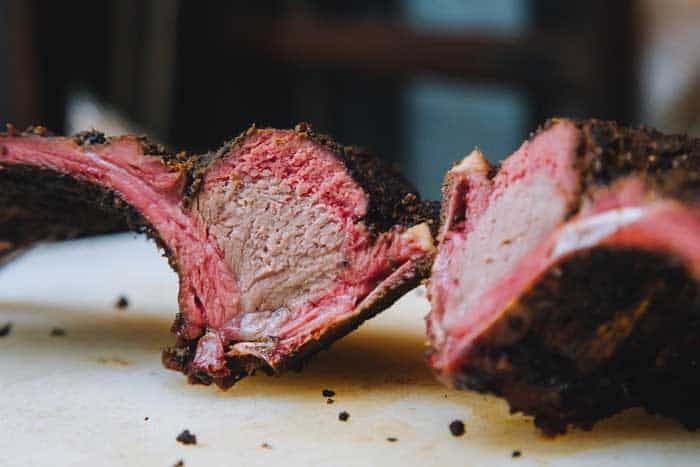
Is it Good or Bad?
Honestly, it’s neither. While many grill masters like to boast that the presence of a smoke ring implies perfectly cooked food, it’s merely a chemical reaction from using the smoking process. A smoke ring doesn’t affect the taste of the meat or quality.
Despite knowing that it doesn’t add anything extra to the meat, this chemical phenomenon is still sought after by many grillers as a matter of pride in their cooking. Luckily, some tips can help you stand together with your grilling peers, even if you know the secret of the ring.
What Causes a Smoke Ring?
Most vertebrates have a protein called myoglobin inside of them. Myoglobin is capable of holding oxygen inside muscle cells and is also directly responsible for how long an animal can hold its breath.
Myoglobin has pigments within it that contain iron. This iron makes the flesh of cattle a familiar red, while the much higher levels in whales or dolphins make their meat almost purple. When exposed to the air, the red fades to brown as the iron oxidizes.
Something that prevents the meat from losing the pink or red hue is when it is introduced to smoke. More specifically, when the NO (Nitric Oxide) and CO (Carbon Monoxide) bond with the iron in the myoglobin and prevent it from oxidizing. This keeps the meat pink even once it’s exposed to the air.
What causes a smoke ring is this NO trapping the iron inside the meat and preventing the oxidizing process. The ring is only just under the meat’s surface because that’s how deep the smoke can penetrate and affect the myoglobin.
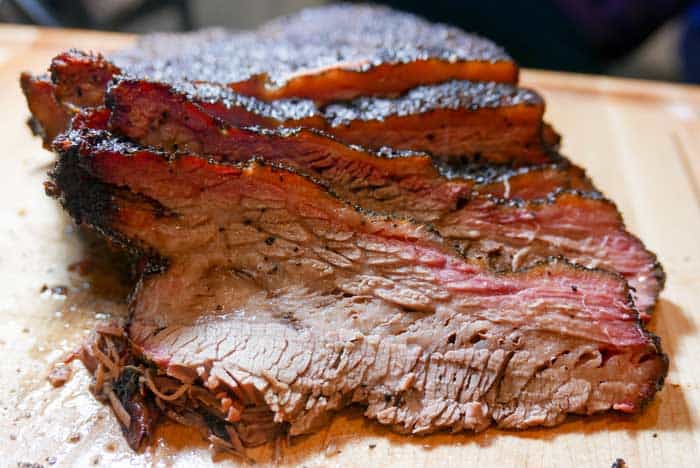
How to Get a Good Smoke Ring
If the talk of the badge of honor or the pride grillers gets from achieving a smoke ring didn’t tip you off, it’s not exactly easy to make one appear. Several factors can improve the chances of an appearance, and a combination of them is the key to success.
Wood choice
The deeper the smoke penetrates the meat, the better the smoke ring is going to look. You’ll want wood that gives off plenty of smoke when burnt so that it can fully invade the meat.
Fresh or green wood produces plenty of smoke when burned, although it doesn’t burn as quickly as regular seasoned wood. However, seasoned wood tends to give off less smoke in return. Don’t use only greenwood, though, as too much can apply a bitter taste to the meat.
Try to avoid using charcoal, as it produces less nitric oxide than you need for a smoke ring. A surprisingly useful fuel source is bark, as the amount of nitrogen in the bark is higher than in the wood itself.
Moisture
Moisture is a double-edged sword when it comes to achieving the perfect smoke ring bbq. You want to avoid your fuel getting any moisture on it, but spraying water on the meat is critical for getting a quality smoke ring.
Wet fuel creates more smoke, but it’s not the kind of smoke you need. NO is produced from the combustion caused by flame, so all you’re doing is stunting the smoke ring’s potential by using wet fuel.
Spraying water on the meat doesn’t mean soaking it, but merely keeping a layer of moisture on it for the first hour or so of cooking. This moisture layer helps trap smoke on the surface and improves your chances of getting the smoke ring you desire.
Temperature
Particularly in the early portion of cooking, you want to keep your temperature low to start. Most of the chemical interactions between nitric oxide and the meat occur in the earlier stages of combustion, so starting around 225°F is your best bet.
You should begin cooking before the meat has a chance to hit room temperature. Don’t slap a frozen hunk of meat on the grill, but don’t allow it to thaw fully. It will give NO more time to bond with the myoglobin and for the smoke to penetrate even deeper into the meat.
Time
The first hour of cooking is the most important when it comes to getting the smoke ring. This is when the smoke can fully attack the meat and create the ring before the meat has a chance to get too cooked.
Once the meat reaches 140°F, the smoke won’t be able to affect it anymore. If you still don’t have a smoke ring at this point, then you’re simply out of luck until your next attempt.
Smoke levels
Your smoke levels should be the heaviest during the first hour of cooking. If you keep your fuel smoldering while following the other tips, the smoke will have the best chance of seeping into the meat.
Once you’ve reached the 140°F mark, your smoke levels don’t matter anymore. The NO should’ve already created the perfect smoke ring in your meat, and now you just need to finish the cooking process.
Avoid using BBQ rubs
This may seem like a strange rule to follow if you want flavorful meat, but BBQ rubs can actually severely hurt your chances at achieving a smoke ring.
Rubs or seasonings on the meat’s surface almost act like a shield against the smoke, which is exactly what you don’t want. Seasoning is fine so long as it’s spread out enough to let the smoke in, but BBQ rubs tend to be thicker and take up more surface area.
If you want to add a rub or sauce to your meat, wait until it’s either done cooking or after the 140°F mark. At that point, the smoke ring is as good as it’s going to get, and adding more things to the meat won’t affect it anymore.
Tips for brisket
Smoked beef brisket tends to have high-fat levels, and this fat can be detrimental to your smoke ring. You don’t want to remove all of the fat in order to preserve the flavor, but clearing the surface of the meat will allow for the smoke to penetrate it thoroughly.
Tips for ribs
Ribs are the type of meat where it’s most important to start off cold. They need more time for the nitric oxide to work its magic, so make sure there is very little time between the ribs leaving the fridge and hitting the grill.
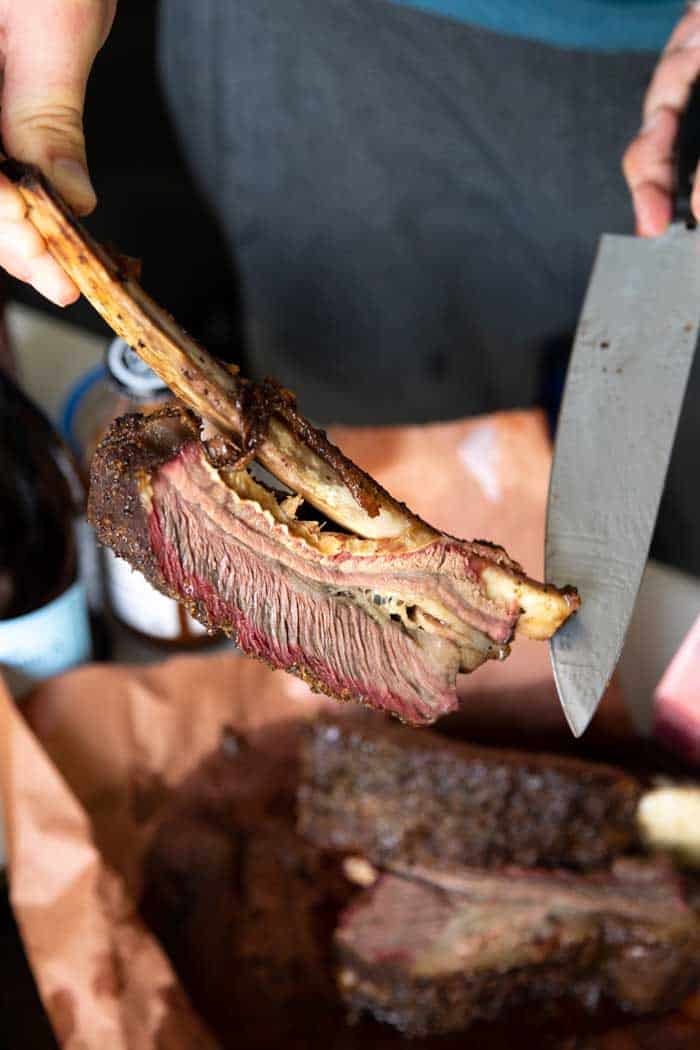
Hacks for Getting a Smoke Ring
As you can see, there’s a lot that goes into getting a smoke ring in your meat. What if you don’t want to do all of that work and prep time and nitpicking? There is a way to ‘cheat’ your way into getting a smoke ring that requires far less work but also provides less satisfaction.
The nitrates in NO is what creates the smoke ring, not necessarily the smoke itself. Adding these chemicals to the meat will lead to the same result as trying to coax it from the smoke and flame.
Most curing solutions have the necessary chemicals, so adding these to the surface of the meat or your brine will give you a significant smoke ring. Use these in moderation, though, as too much can actually be toxic.
How to get a Smoke Ring With an Electric Smoker
Without doing anything extra to your electric smoker or the meat, getting a smoke ring is impossible. Depending on the size of your electric smoker, there are a couple of options available to you if you’re truly intent on pursuing the ring.
If it’s a bigger smoker, then you can actually add some pieces of wood to the smoker at the beginning of the cooking process. It’s not quite the same as using a regular grill, but it should still get the job done.
If your smoker is too small for extra wood chunks to be added, then you will have to go with the curing solution. It will get the job done, and you can still pull it out of your electric smoker with confidence.
